Dallas Smith’s Aug. 16 commentary, “Indigenous rights are key to resolving strike,” rightly emphasizes the need for stability in the forest industry. …However, one company that stands apart in rejecting that stability is La-kwa sa muqw Forestry LP (LKSM). This company is refusing to follow the coast pattern collective agreement and the level playing field it provides. …While I agree with Smith that many bargaining proposals are agreed upon, it is incorrect for him to say wages and monetary terms are settled. …Smith’s commentary suggests our constitutional right to collectively bargain is “inconsistent with Indigenous self-determination and constitutionally protected rights.” We strongly disagree. It also claims that introducing a non-union contractor aligns with the 2019 Declaration on the Rights of Indigenous Peoples Act (DRIPA). Again, we reject the notion that constitutionally protected, and provincially regulated labour rights can be overridden simply because an employer — regardless of Indigenous ownership — wants to contract out union jobs.


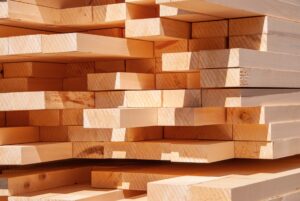 The US Court of International Trade threw out a legal challenge from Canadian softwood lumber producers J.D. Irving Ltd. granting a motion-to-dismiss from the Commerce Department. Timothy Reif said in the opinion that J.D. Irving, which had challenged Commerce’s 2022 antidumping administrate review on grounds that the agency erred by assigning a higher cash deposit rate in the order, has its proper venue under a binational panel though the USMCA now reviewing the Commerce order. While the Canadian firm said it was challenging not the Commerce fine order but the instruction for the cash deposit rate. Reif said the challenge entered on the commerce final result and thus should rest before the USMCA panel. [to access the full story, a MLex.com subscription is required]
The US Court of International Trade threw out a legal challenge from Canadian softwood lumber producers J.D. Irving Ltd. granting a motion-to-dismiss from the Commerce Department. Timothy Reif said in the opinion that J.D. Irving, which had challenged Commerce’s 2022 antidumping administrate review on grounds that the agency erred by assigning a higher cash deposit rate in the order, has its proper venue under a binational panel though the USMCA now reviewing the Commerce order. While the Canadian firm said it was challenging not the Commerce fine order but the instruction for the cash deposit rate. Reif said the challenge entered on the commerce final result and thus should rest before the USMCA panel. [to access the full story, a MLex.com subscription is required]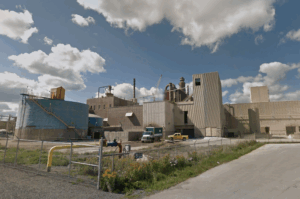 A proposed sale of Northern Pulp’s vast timberlands appears to leave nothing for the cleanup of its former kraft pulp mill in Pictou County or for the money owed to taxpayers. But the companies that provided interim financing to Northern Pulp through its five-year insolvency, and potentially a significant portion of its underfunded pension obligation to former mill employees, would get paid. On Monday, Northern Pulp filed a proposed “stalking horse” (a minimum bid) of $104 million for Northern Timber with the BC Supreme Court as part of its insolvency proceedings. It is also seeking the extension of creditor protection, leaving the potential that a higher bid could come in for its valuable forest lands. …No estimated cost has been released publicly for cleaning up the Abercrombie site that housed Northern Pulp for 50 years. …On Monday, Northern Pulp said it had provided a cleanup plan to the Department of Environment.
A proposed sale of Northern Pulp’s vast timberlands appears to leave nothing for the cleanup of its former kraft pulp mill in Pictou County or for the money owed to taxpayers. But the companies that provided interim financing to Northern Pulp through its five-year insolvency, and potentially a significant portion of its underfunded pension obligation to former mill employees, would get paid. On Monday, Northern Pulp filed a proposed “stalking horse” (a minimum bid) of $104 million for Northern Timber with the BC Supreme Court as part of its insolvency proceedings. It is also seeking the extension of creditor protection, leaving the potential that a higher bid could come in for its valuable forest lands. …No estimated cost has been released publicly for cleaning up the Abercrombie site that housed Northern Pulp for 50 years. …On Monday, Northern Pulp said it had provided a cleanup plan to the Department of Environment.




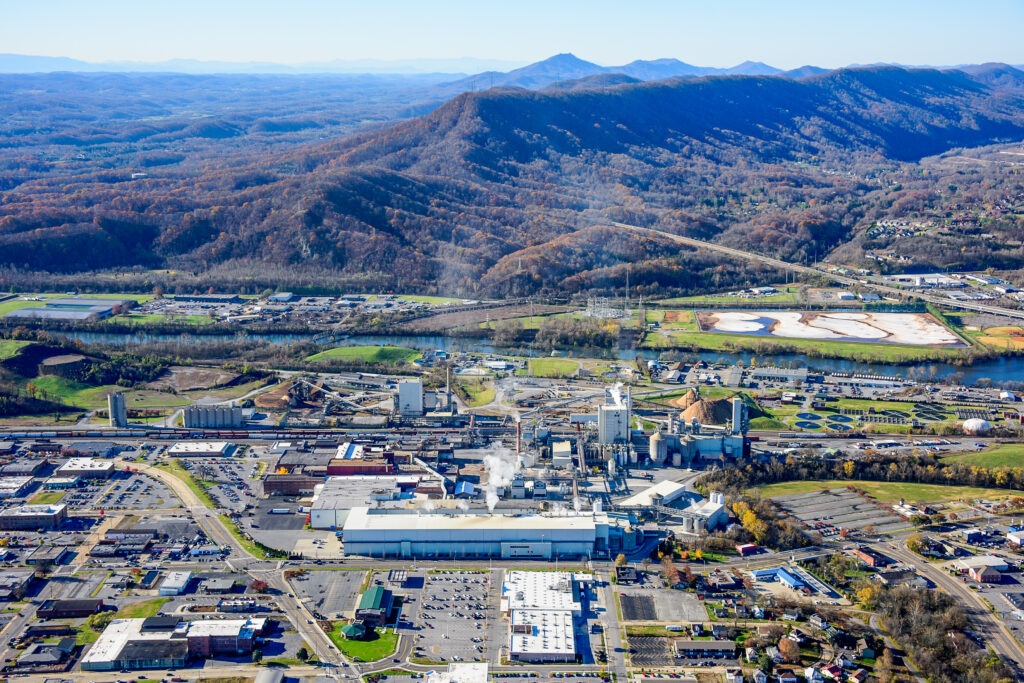
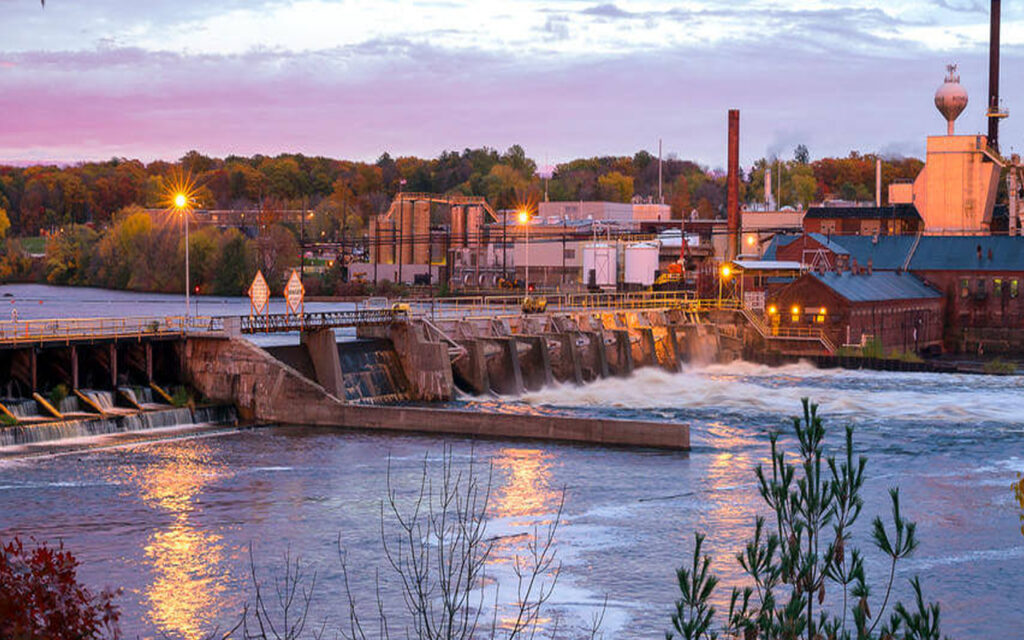

 The United States is the top wood-importing country. Trade issues and tariffs could be a significant factor in determining the path of least resistance for lumber, lumber futures, and wood product prices over the coming weeks and months. …The offseason for lumber demand is on the horizon. The potential for increased price variance due to the uncertainty created by U.S.-Canada trade relations remains high, and the path of least resistance of U.S. short-term interest rates is likely to be lower. Time will tell if longer-term rates follow any Fed Rate cuts over the coming months. Lumber remains a critical construction material, and the current price levels offer a positive risk-reward profile. Accumulating lumber-related assets on a scale-down basis during periods of price weakness over the coming weeks and months could be optimal for 2026, provided the housing market improves and lumber demand rises.
The United States is the top wood-importing country. Trade issues and tariffs could be a significant factor in determining the path of least resistance for lumber, lumber futures, and wood product prices over the coming weeks and months. …The offseason for lumber demand is on the horizon. The potential for increased price variance due to the uncertainty created by U.S.-Canada trade relations remains high, and the path of least resistance of U.S. short-term interest rates is likely to be lower. Time will tell if longer-term rates follow any Fed Rate cuts over the coming months. Lumber remains a critical construction material, and the current price levels offer a positive risk-reward profile. Accumulating lumber-related assets on a scale-down basis during periods of price weakness over the coming weeks and months could be optimal for 2026, provided the housing market improves and lumber demand rises. 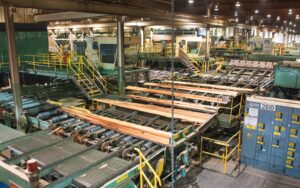 Lumber buyers placed unsuccessful bets on tariffs and interest rates Lumber prices have dropped by more than 14% from a record high in early August. Many home builders, contractors and retailers wagered that higher U.S. tariffs on imports would boost the cost of lumber, while lower interest rates would lift demand for the building material. But those bets have failed to pay off – and lumber prices have tallied a steep decline from a record high reached only three weeks ago. That price decline could lead to a drop in production at a time when home-building and housing demand starts to heat up. The demand component for spring 2025 was a “complete swing and a miss,” said Greg Kuta, at lumber broker Westline Capital Strategies. …On Tuesday, lumber futures for September delivery settled at $595.50 per thousand board feet. …Canadian mills are losing out with lumber prices well under the cost of production,” Kuta said.
Lumber buyers placed unsuccessful bets on tariffs and interest rates Lumber prices have dropped by more than 14% from a record high in early August. Many home builders, contractors and retailers wagered that higher U.S. tariffs on imports would boost the cost of lumber, while lower interest rates would lift demand for the building material. But those bets have failed to pay off – and lumber prices have tallied a steep decline from a record high reached only three weeks ago. That price decline could lead to a drop in production at a time when home-building and housing demand starts to heat up. The demand component for spring 2025 was a “complete swing and a miss,” said Greg Kuta, at lumber broker Westline Capital Strategies. …On Tuesday, lumber futures for September delivery settled at $595.50 per thousand board feet. …Canadian mills are losing out with lumber prices well under the cost of production,” Kuta said.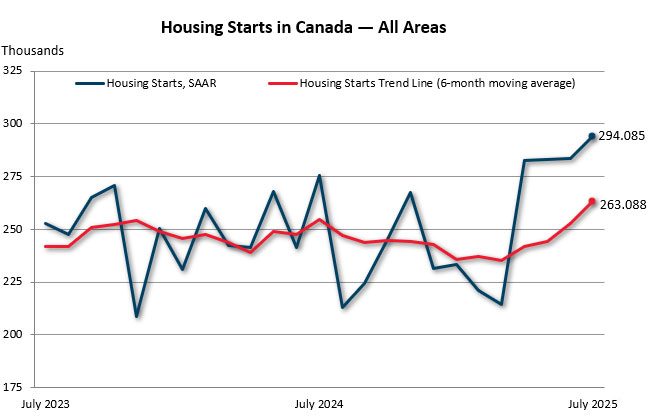
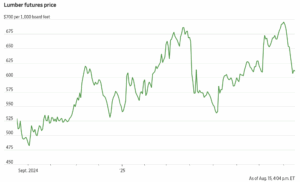 Lumber futures have dropped about 12% since hitting a three-year high two weeks ago, a sign that wood buyers stocked up before duties on Canadian two-by-fours more than doubled this month and that traders are worried about the U.S. housing market. Futures for September delivery fell to around $610 per thousand board feet late Friday and have declined in nine of the past 10 trading sessions. On-the-spot prices are also down, according to Random Lengths. …Jordan Rizzuto, chief investment officer at GammaRoad Capital Partners… said that besides indicating that lumber was piled high in U.S. lumberyards before the higher duties took effect, the whipsaw in wood prices is a warning sign for other asset classes. “Lumber’s price behavior over the past several weeks relative to countercyclical and defensive assets suggests potential weakening of new construction and cyclical sectors of the economy,” he said. [to access the full story a WSJ subscription is required]
Lumber futures have dropped about 12% since hitting a three-year high two weeks ago, a sign that wood buyers stocked up before duties on Canadian two-by-fours more than doubled this month and that traders are worried about the U.S. housing market. Futures for September delivery fell to around $610 per thousand board feet late Friday and have declined in nine of the past 10 trading sessions. On-the-spot prices are also down, according to Random Lengths. …Jordan Rizzuto, chief investment officer at GammaRoad Capital Partners… said that besides indicating that lumber was piled high in U.S. lumberyards before the higher duties took effect, the whipsaw in wood prices is a warning sign for other asset classes. “Lumber’s price behavior over the past several weeks relative to countercyclical and defensive assets suggests potential weakening of new construction and cyclical sectors of the economy,” he said. [to access the full story a WSJ subscription is required]
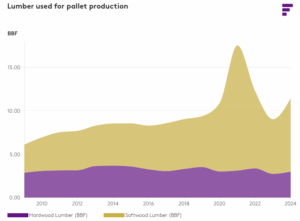 Economic uncertainty has clouded the pallet market outlook, as July’s job report revealed weaker-than-expected job growth. The elimination of the de minimis tariff exemption for low-value shipments is expected to improve pallet demand. Anticipated interest rate cuts will have a knock-on effect on housing affordability, stimulating the construction sector which in turn impacts lumber prices. …As pallet usage has grown, softwood has become the dominant material used in pallet manufacturing due to its abundance and cost-effectiveness. Hardwood mills were hit hard, and many saw closures, after the Chinese property market collapsed as that was its biggest end-use market. This Canadian softwood lumber supply shock does certainly leave the door open for the hardwood pallet to regain some market share. Supply and demand indicators are pointing to higher prices towards the end of 2025 and into 2026.
Economic uncertainty has clouded the pallet market outlook, as July’s job report revealed weaker-than-expected job growth. The elimination of the de minimis tariff exemption for low-value shipments is expected to improve pallet demand. Anticipated interest rate cuts will have a knock-on effect on housing affordability, stimulating the construction sector which in turn impacts lumber prices. …As pallet usage has grown, softwood has become the dominant material used in pallet manufacturing due to its abundance and cost-effectiveness. Hardwood mills were hit hard, and many saw closures, after the Chinese property market collapsed as that was its biggest end-use market. This Canadian softwood lumber supply shock does certainly leave the door open for the hardwood pallet to regain some market share. Supply and demand indicators are pointing to higher prices towards the end of 2025 and into 2026.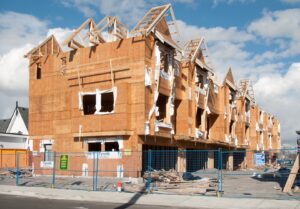 Boosted by a surge in the multifamily sector, US housing starts saw a sizeable jump in July, posting the highest total of starts since February. Housing completions were also up in July, while building permits were down. According to the numbers released by the US Census Bureau on Tuesday, overall housing starts totaled 1.428 million in July, up 5.2% from June and 12.9% above July 2024. It was the highest number of overall starts since February’s 1.490 million. The sector was paced by buildings with five or more units, which had 470,000 starts in July, up from 421,000 in June. This is the highest total of multifamily starts in more than a year. Single-family housing starts were also up, coming in at 939,000 for July. This reflects a 2.8% increase month over month; however, totals are still low compared to most months over the last year. …Odeta Kushi, at First American, said the single-family housing starts numbers are concerning.
Boosted by a surge in the multifamily sector, US housing starts saw a sizeable jump in July, posting the highest total of starts since February. Housing completions were also up in July, while building permits were down. According to the numbers released by the US Census Bureau on Tuesday, overall housing starts totaled 1.428 million in July, up 5.2% from June and 12.9% above July 2024. It was the highest number of overall starts since February’s 1.490 million. The sector was paced by buildings with five or more units, which had 470,000 starts in July, up from 421,000 in June. This is the highest total of multifamily starts in more than a year. Single-family housing starts were also up, coming in at 939,000 for July. This reflects a 2.8% increase month over month; however, totals are still low compared to most months over the last year. …Odeta Kushi, at First American, said the single-family housing starts numbers are concerning.



 Western provinces and the East Coast should remain on alert for the possibility of more wildfire activity throughout the rest of summer, based on the latest federal government update. Wide swaths of B.C. and the prairie provinces are expected to be drier and hotter than normal. Federal government forecasters also see above-average seasonal temperatures for most of the country over the next three months. Typically in the more northern regions, fire activity starts to wind down around September as cooler weather sets in and the days grow shorter. Not this year. Federal bureaucrats said there’s a high likelihood that the large fires currently burning will continue well into the fall amid the higher temperatures. …Emergency Management Minister Eleanor Olszewski said “it’s been a really hot and dry summer and this has of course contributed to above-normal fire activity in BC, Manitoba, Saskatchewan and Newfoundland. New Brunswick and Nova Scotia.”
Western provinces and the East Coast should remain on alert for the possibility of more wildfire activity throughout the rest of summer, based on the latest federal government update. Wide swaths of B.C. and the prairie provinces are expected to be drier and hotter than normal. Federal government forecasters also see above-average seasonal temperatures for most of the country over the next three months. Typically in the more northern regions, fire activity starts to wind down around September as cooler weather sets in and the days grow shorter. Not this year. Federal bureaucrats said there’s a high likelihood that the large fires currently burning will continue well into the fall amid the higher temperatures. …Emergency Management Minister Eleanor Olszewski said “it’s been a really hot and dry summer and this has of course contributed to above-normal fire activity in BC, Manitoba, Saskatchewan and Newfoundland. New Brunswick and Nova Scotia.” As wildfires scorch Canada amid its second-worst wildfire season on record, Indigenous leaders and experts say the country’s approach remains reactive — leaving Indigenous communities disproportionately vulnerable. At a Monday press conference, federal officials reported that 707 wildfires are currently active nationwide. The extreme fire activity has strained firefighting resources, prompting Canada to deploy over 560 international firefighters from six countries alongside Canadian personnel. This situation is particularly dire for Indigenous communities. Jen Baron, a postdoctoral researcher and incoming assistant professor at the University of BC’s Centre for Wildfire Coexistence, said… Many First Nations communities are “overexposed and underserved.” Remote, fly-in communities with minimal access routes face significant risks in evacuation and recovery. The infrastructure gaps make an already dangerous situation much worse, Baron said. Some federal investments have targeted these gaps. This week, officials announced a $540,000 commitment to two wildfire training programs.
As wildfires scorch Canada amid its second-worst wildfire season on record, Indigenous leaders and experts say the country’s approach remains reactive — leaving Indigenous communities disproportionately vulnerable. At a Monday press conference, federal officials reported that 707 wildfires are currently active nationwide. The extreme fire activity has strained firefighting resources, prompting Canada to deploy over 560 international firefighters from six countries alongside Canadian personnel. This situation is particularly dire for Indigenous communities. Jen Baron, a postdoctoral researcher and incoming assistant professor at the University of BC’s Centre for Wildfire Coexistence, said… Many First Nations communities are “overexposed and underserved.” Remote, fly-in communities with minimal access routes face significant risks in evacuation and recovery. The infrastructure gaps make an already dangerous situation much worse, Baron said. Some federal investments have targeted these gaps. This week, officials announced a $540,000 commitment to two wildfire training programs.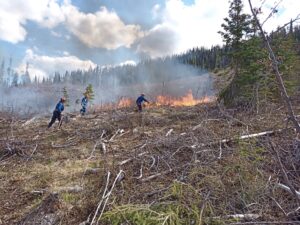 OTTAWA — Corey Hogan, Parliamentary Secretary to the Honourable Tim Hodgson, Minister of Energy and Natural Resources, announced an investment of $540,300 for two projects through the Government of Canada’s Fighting and Managing Wildfires in a Changing Climate Program (FMWCC) – Training Fund. The funding includes: $335,000 to Yorkton Tribal Council in Yorkton, Saskatchewan… [and] $204,800 to the Rural Municipality of Piney, Manitoba. Through this investment, community members in Manitoba and Saskatchewan — two provinces that have faced severe wildfire conditions this year — will receive wildland firefighting training to enhance their communities’ capacity to prepare and respond to wildfires. …The addition of these 95 trainees has us on track to train over 2,800 wildland firefighters in
OTTAWA — Corey Hogan, Parliamentary Secretary to the Honourable Tim Hodgson, Minister of Energy and Natural Resources, announced an investment of $540,300 for two projects through the Government of Canada’s Fighting and Managing Wildfires in a Changing Climate Program (FMWCC) – Training Fund. The funding includes: $335,000 to Yorkton Tribal Council in Yorkton, Saskatchewan… [and] $204,800 to the Rural Municipality of Piney, Manitoba. Through this investment, community members in Manitoba and Saskatchewan — two provinces that have faced severe wildfire conditions this year — will receive wildland firefighting training to enhance their communities’ capacity to prepare and respond to wildfires. …The addition of these 95 trainees has us on track to train over 2,800 wildland firefighters in  Road closures, evacuations, travel chaos and stern warnings from officials have become fixtures of Canada’s wildfire season. But as the country goes through its second-worst burn on record, the blazes come with a twist: few are coming from the western provinces. Instead, the worst of the fires have been concentrated in the prairie provinces and the Atlantic region, with bone-dry conditions upending how Canada responds to a threat that is only likely to grow as the climate warms. Experts say the shift serves as a stark reminder that the risk of disaster is present across the thickly forested nation. …“We had fire everywhere,” said Paul Kovacs, at the Institute for Catastrophic Loss Reduction at Western University. “And so for the first time, we had a different thought about wildfires as a country. …This is a national issue. This can show up anywhere.”
Road closures, evacuations, travel chaos and stern warnings from officials have become fixtures of Canada’s wildfire season. But as the country goes through its second-worst burn on record, the blazes come with a twist: few are coming from the western provinces. Instead, the worst of the fires have been concentrated in the prairie provinces and the Atlantic region, with bone-dry conditions upending how Canada responds to a threat that is only likely to grow as the climate warms. Experts say the shift serves as a stark reminder that the risk of disaster is present across the thickly forested nation. …“We had fire everywhere,” said Paul Kovacs, at the Institute for Catastrophic Loss Reduction at Western University. “And so for the first time, we had a different thought about wildfires as a country. …This is a national issue. This can show up anywhere.”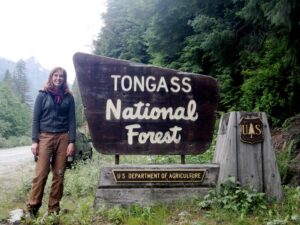 KLAWOCK, Alaska — Steinway pianos have a particular sound. …The secret to the sound isn’t merely Steinway’s skilled craftsmen—who’ve been using the same methods since 1853—but the specialized wood they use for the soundboards. It comes from the Tongass National Forest in Alaska. Unfortunately, a broken promise from the federal government will soon stop the music. …In 2016 the U.S. Department of Agriculture created a management plan that promised the availability of old-growth timber from the Tongass annually on a fixed schedule. …Not only has the Forest Service never met the timber-sale goals outlined in their management plan, in the past four years it offered less than 10% of the annual needs for the industry. …An executive order from President Trump… and a lawsuit we filed against the USDA earlier this year haven’t been enough to get the Forest Service to stop starving the industry. [to access the full story a WSJ subscription is required]
KLAWOCK, Alaska — Steinway pianos have a particular sound. …The secret to the sound isn’t merely Steinway’s skilled craftsmen—who’ve been using the same methods since 1853—but the specialized wood they use for the soundboards. It comes from the Tongass National Forest in Alaska. Unfortunately, a broken promise from the federal government will soon stop the music. …In 2016 the U.S. Department of Agriculture created a management plan that promised the availability of old-growth timber from the Tongass annually on a fixed schedule. …Not only has the Forest Service never met the timber-sale goals outlined in their management plan, in the past four years it offered less than 10% of the annual needs for the industry. …An executive order from President Trump… and a lawsuit we filed against the USDA earlier this year haven’t been enough to get the Forest Service to stop starving the industry. [to access the full story a WSJ subscription is required]
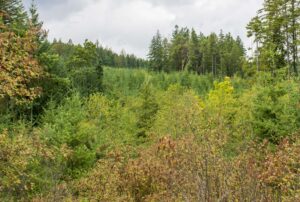 LAKE HURON, Ontario — Jenifer Brousseau often picks berries and traditional medicines in the bush around her community in northeastern Ontario. But in recent years, Brousseau and many others from Serpent River have been concerned about the forestry industry’s use of herbicides that contain the chemical glyphosate. …Environmental groups — including Friends of the Earth Canada, the David Suzuki Foundation, Safe Food Matters and Environmental Defence Canada — have launched a court challenge of Health Canada’s conclusions on glyphosate. …Some small municipalities in northern Ontario have also started to petition the province in their effort to get the ban. …Fred Pinto, an adjunct professor of forestry at the University of Toronto said herbicides are just one tool used by forestry companies to manage vegetation. Pinto said herbicide spraying is often done using aircraft in areas that have little to no road access.
LAKE HURON, Ontario — Jenifer Brousseau often picks berries and traditional medicines in the bush around her community in northeastern Ontario. But in recent years, Brousseau and many others from Serpent River have been concerned about the forestry industry’s use of herbicides that contain the chemical glyphosate. …Environmental groups — including Friends of the Earth Canada, the David Suzuki Foundation, Safe Food Matters and Environmental Defence Canada — have launched a court challenge of Health Canada’s conclusions on glyphosate. …Some small municipalities in northern Ontario have also started to petition the province in their effort to get the ban. …Fred Pinto, an adjunct professor of forestry at the University of Toronto said herbicides are just one tool used by forestry companies to manage vegetation. Pinto said herbicide spraying is often done using aircraft in areas that have little to no road access.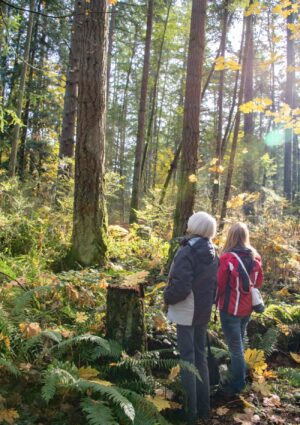 PENNSYLVANIA — The Allegheny National Forest is set to ramp up logging by more than 10% this year as part of a push from President Donald Trump to boost domestic lumber supplies. The move has sparked fierce debate between environmentalists and pro-logging groups who disagree on cutting trees to reduce wildfire risks or improve forest health. In the coming fiscal year, the state’s only national forest is set to sell 45 million board feet, an over 12% increase from this fiscal year, said Alisen Downs, for the Allegheny National Forest. …Allegheny National Forest has proposed a five-year plan starting next fiscal year, Downs said.“I think a slow and steady progress toward that increase is probably the best approach,” said Julia McCray, of the Allegheny Forest Alliance, which includes local officials and people from the timber industry. …While next year’s logging will be an increase… it’s not a historic high.
PENNSYLVANIA — The Allegheny National Forest is set to ramp up logging by more than 10% this year as part of a push from President Donald Trump to boost domestic lumber supplies. The move has sparked fierce debate between environmentalists and pro-logging groups who disagree on cutting trees to reduce wildfire risks or improve forest health. In the coming fiscal year, the state’s only national forest is set to sell 45 million board feet, an over 12% increase from this fiscal year, said Alisen Downs, for the Allegheny National Forest. …Allegheny National Forest has proposed a five-year plan starting next fiscal year, Downs said.“I think a slow and steady progress toward that increase is probably the best approach,” said Julia McCray, of the Allegheny Forest Alliance, which includes local officials and people from the timber industry. …While next year’s logging will be an increase… it’s not a historic high.  A budget crisis a century in the making is coming to a head as Oregon’s rural counties. The crisis originates with a compromise from the era of President Teddy Roosevelt and was prolonged by piecemeal solutions made during the Timber Wars of the 1990s. Now the president’s signature One Big Beautiful Bill removes a key funding source for Oregon’s timber counties. If nothing is done, rural counties could find themselves with no money to pay for sheriff’s departments or other essential needs. …Many rural Oregon counties once relied on a portion of revenue from trees logged on federal lands to cover the costs of essential services. That federal land doesn’t generate local property taxes… So the federal government started sharing a portion of its logging revenues with those counties. When those declined, federal lawmakers came up with the Secure Rural Schools program. …But Congress needs to regularly re-authorize the program.
A budget crisis a century in the making is coming to a head as Oregon’s rural counties. The crisis originates with a compromise from the era of President Teddy Roosevelt and was prolonged by piecemeal solutions made during the Timber Wars of the 1990s. Now the president’s signature One Big Beautiful Bill removes a key funding source for Oregon’s timber counties. If nothing is done, rural counties could find themselves with no money to pay for sheriff’s departments or other essential needs. …Many rural Oregon counties once relied on a portion of revenue from trees logged on federal lands to cover the costs of essential services. That federal land doesn’t generate local property taxes… So the federal government started sharing a portion of its logging revenues with those counties. When those declined, federal lawmakers came up with the Secure Rural Schools program. …But Congress needs to regularly re-authorize the program.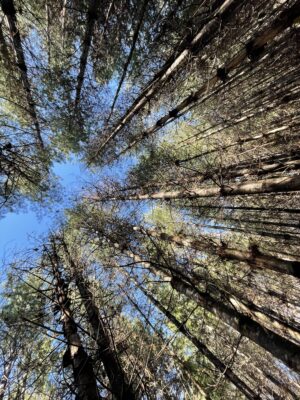 The US Forest Service kicked off timber sales in the Hoosier National Forest this week despite resistance from advocacy groups and Gov. Mike Braun, who called the federal project “misguided.” The timber auction is part of a controversial forest management plan called the Houston South Project — an initiative the USFS says will promote tree growth, reduce disease and move the landscape toward “desirable conditions.” Local environmental advocates have been suing the agency to halt operations since 2020, saying the project could jeopardize the quality of drinking water 130,000 Hoosiers rely on in Lake Monroe. But the project is plowing ahead, despite local outcry and direct pleas from Braun to halt the project. The Forest Service declined to immediately comment to IndyStar’s request, instead asking for one to two weeks to respond. …The project includes prescribed burns on 13,500 acres of forest and permitting timber harvests on another 4,300 acres across the next 10-15 years.
The US Forest Service kicked off timber sales in the Hoosier National Forest this week despite resistance from advocacy groups and Gov. Mike Braun, who called the federal project “misguided.” The timber auction is part of a controversial forest management plan called the Houston South Project — an initiative the USFS says will promote tree growth, reduce disease and move the landscape toward “desirable conditions.” Local environmental advocates have been suing the agency to halt operations since 2020, saying the project could jeopardize the quality of drinking water 130,000 Hoosiers rely on in Lake Monroe. But the project is plowing ahead, despite local outcry and direct pleas from Braun to halt the project. The Forest Service declined to immediately comment to IndyStar’s request, instead asking for one to two weeks to respond. …The project includes prescribed burns on 13,500 acres of forest and permitting timber harvests on another 4,300 acres across the next 10-15 years.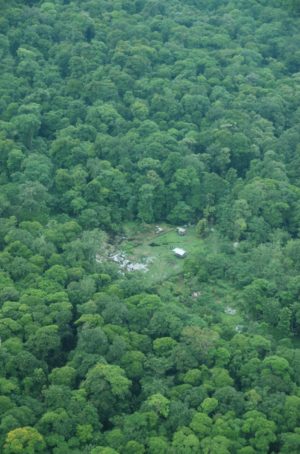 JAKARTA, Indonesia — The recreational vehicle industry is now the biggest consumer of tropical wood in the United States, UK-based NGO Earthsight and Indonesian NGO Auriga Nusantara said. They said evidence showed sheets of tropical “lauan” plywood found in Indonesia were likely being used in the floors, walls and ceilings of RVs produced by major brands like Jayco, Winnebago and Forest River. “Nature-loving RV owners will be horrified,” said Earthsight director Sam Lawson. …Indonesia has one of the world’s highest rates of deforestation linked to mining, farming and logging, and is accused of allowing firms to operate in Borneo with little oversight. …PT Kayu Lapis Asli Murni, sourced timber mostly from rainforest in areas the NGOs visited, half of which was then exported to US firms MJB Wood and Tumac Lumber in 2024, they said.
JAKARTA, Indonesia — The recreational vehicle industry is now the biggest consumer of tropical wood in the United States, UK-based NGO Earthsight and Indonesian NGO Auriga Nusantara said. They said evidence showed sheets of tropical “lauan” plywood found in Indonesia were likely being used in the floors, walls and ceilings of RVs produced by major brands like Jayco, Winnebago and Forest River. “Nature-loving RV owners will be horrified,” said Earthsight director Sam Lawson. …Indonesia has one of the world’s highest rates of deforestation linked to mining, farming and logging, and is accused of allowing firms to operate in Borneo with little oversight. …PT Kayu Lapis Asli Murni, sourced timber mostly from rainforest in areas the NGOs visited, half of which was then exported to US firms MJB Wood and Tumac Lumber in 2024, they said.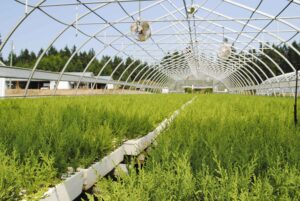 AUSTRALIA — The Victorian Government has
AUSTRALIA — The Victorian Government has 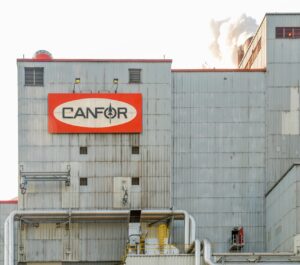 PRINCE GEORGE, BC — Canfor Pulp has been fined after a worker seriously injured their hand in an unguarded piece of machinery. WorkSafeBC issued the $489,104 penalty on July 10 following an inspection at the company’s Northwood Pulp Mill in April. According to the inspection report, a worker was injured on the fifth floor by a hydraulic cylinder that cycles every 64 seconds, “dropping rapidly down” into a metal box. …The agency determined the firm failed to ensure its machinery and equipment was fitted with adequate safeguards to protect workers from hazardous points of operation. …Canfor spokesperson Mina Laudan said a contract worker sustained a hand injury in the incident. “We deeply regret that a worker was injured at our site. It is our responsibility to provide a safe working environment,” said Laudan. “Following the injury, we took immediate steps to safeguard the equipment that was involved in the incident.”
PRINCE GEORGE, BC — Canfor Pulp has been fined after a worker seriously injured their hand in an unguarded piece of machinery. WorkSafeBC issued the $489,104 penalty on July 10 following an inspection at the company’s Northwood Pulp Mill in April. According to the inspection report, a worker was injured on the fifth floor by a hydraulic cylinder that cycles every 64 seconds, “dropping rapidly down” into a metal box. …The agency determined the firm failed to ensure its machinery and equipment was fitted with adequate safeguards to protect workers from hazardous points of operation. …Canfor spokesperson Mina Laudan said a contract worker sustained a hand injury in the incident. “We deeply regret that a worker was injured at our site. It is our responsibility to provide a safe working environment,” said Laudan. “Following the injury, we took immediate steps to safeguard the equipment that was involved in the incident.”
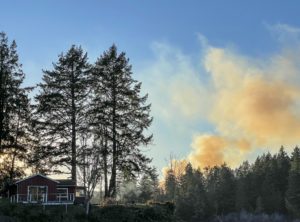 Officials in Nova Scotia say a wildfire in the western part of the province has grown and could force people out of their homes, while cooler temperatures and low winds have helped firefighters in Newfoundland and Labrador. The Long Lake wildfire is expected to grow, said Scott Tingley, manager of forest protection with Nova Scotia’s Natural Resources Department. On Sunday evening, the Nova Scotia Department of Natural Resources said the fire had almost doubled in size, growing from 11 square kilometres in the morning to nearly 20 square kilometres. It had spread past Godfrey Lake to the intersection of Fairns and West Dalhousie roads on one side and the south side of Spectacle Lakes on the other, it added. “These are not favourable firefighting conditions,” Tingley told reporters Sunday morning. “It’s very, very dry.” Two contracted helicopters were helping local firefighters along with crews from Prince Edward Island and Ontario, he said.
Officials in Nova Scotia say a wildfire in the western part of the province has grown and could force people out of their homes, while cooler temperatures and low winds have helped firefighters in Newfoundland and Labrador. The Long Lake wildfire is expected to grow, said Scott Tingley, manager of forest protection with Nova Scotia’s Natural Resources Department. On Sunday evening, the Nova Scotia Department of Natural Resources said the fire had almost doubled in size, growing from 11 square kilometres in the morning to nearly 20 square kilometres. It had spread past Godfrey Lake to the intersection of Fairns and West Dalhousie roads on one side and the south side of Spectacle Lakes on the other, it added. “These are not favourable firefighting conditions,” Tingley told reporters Sunday morning. “It’s very, very dry.” Two contracted helicopters were helping local firefighters along with crews from Prince Edward Island and Ontario, he said.